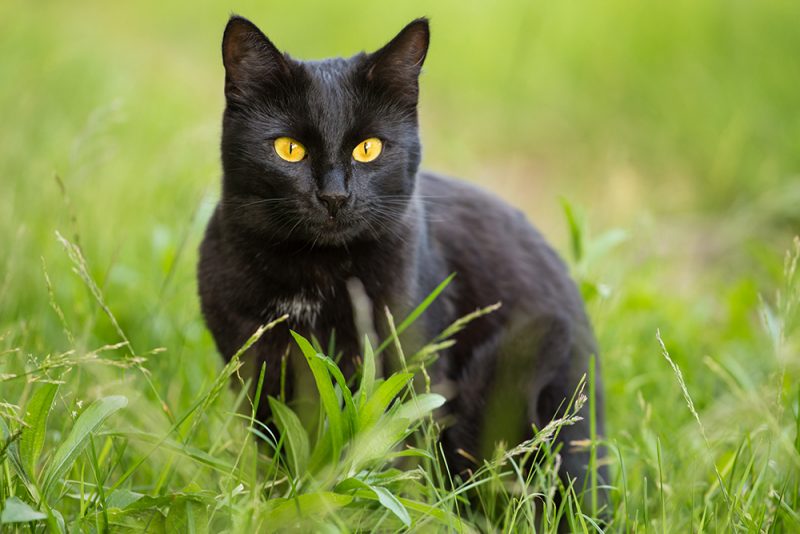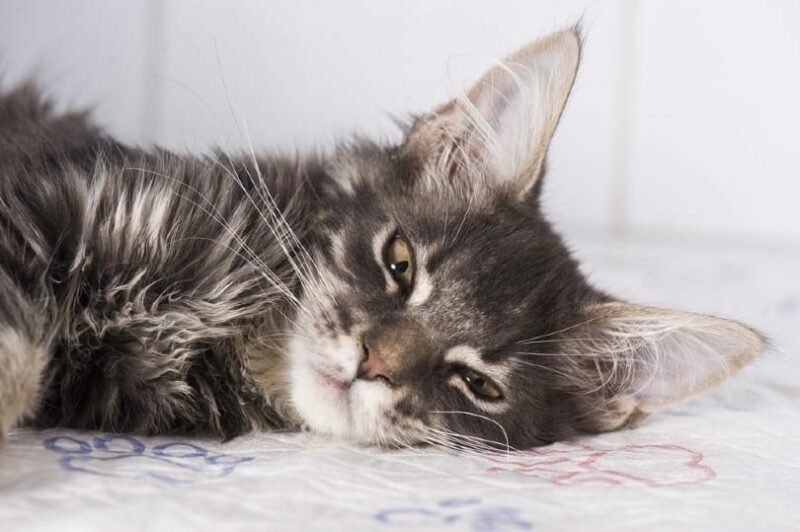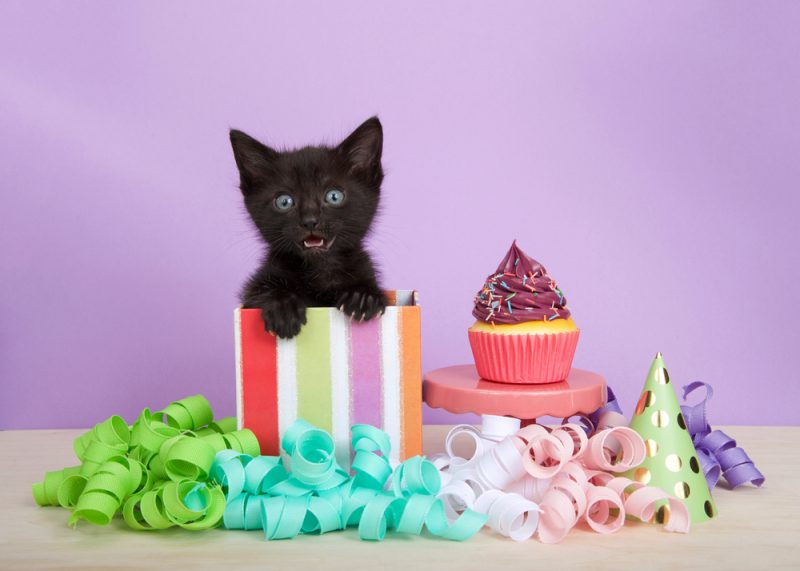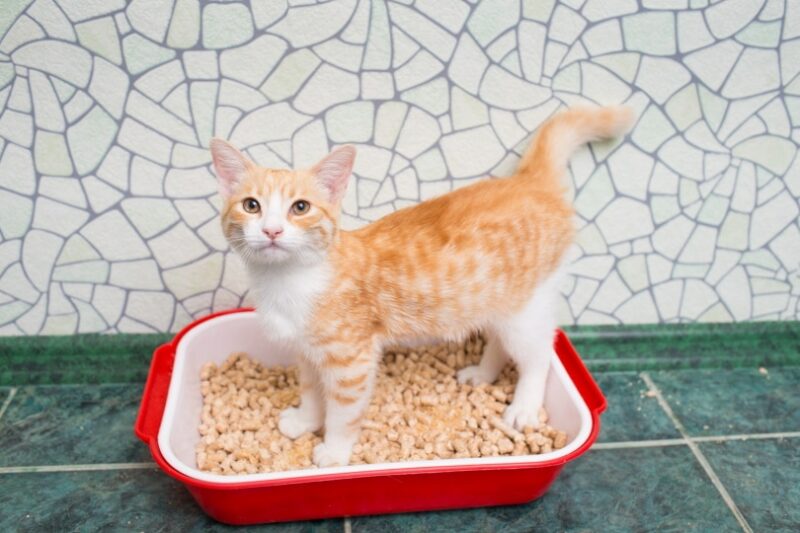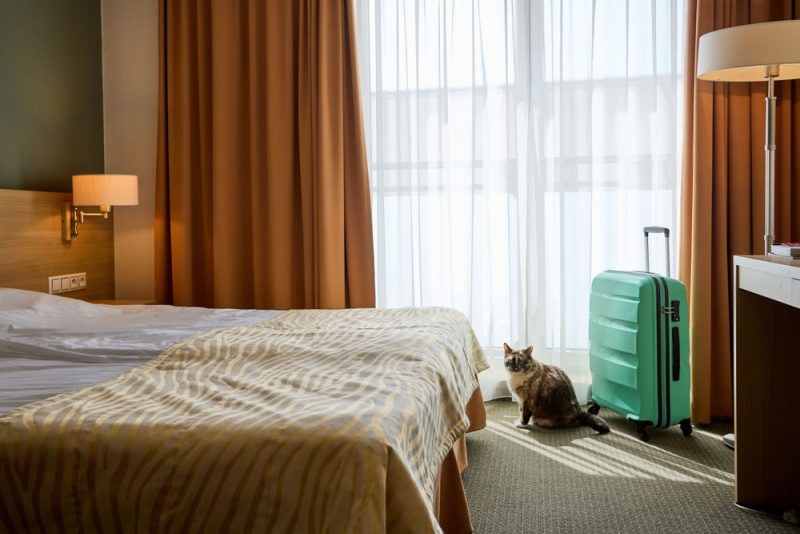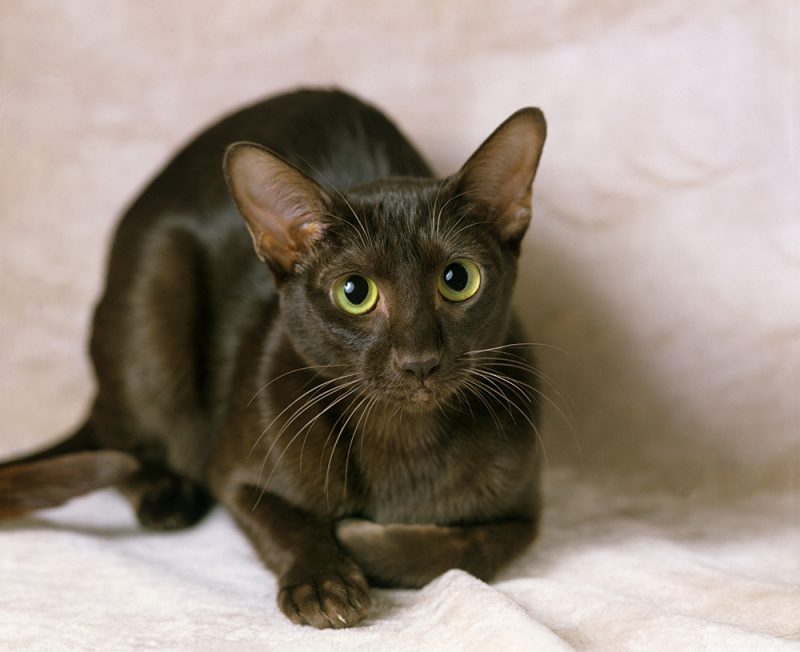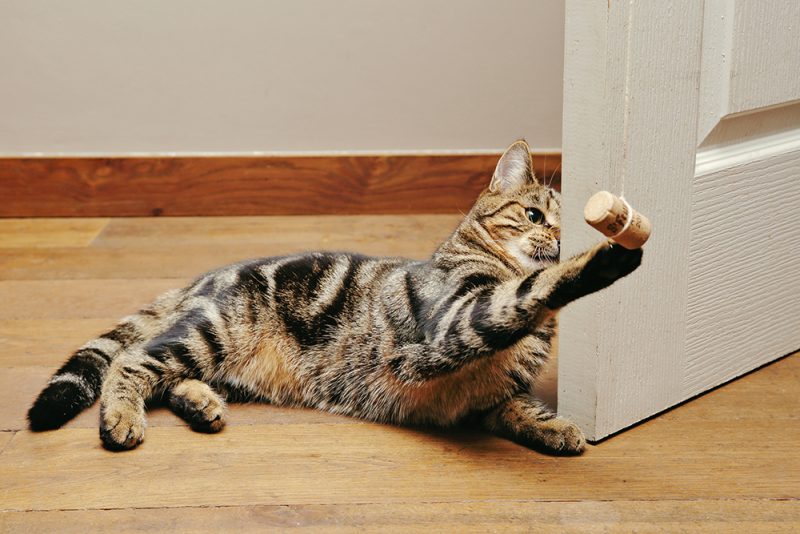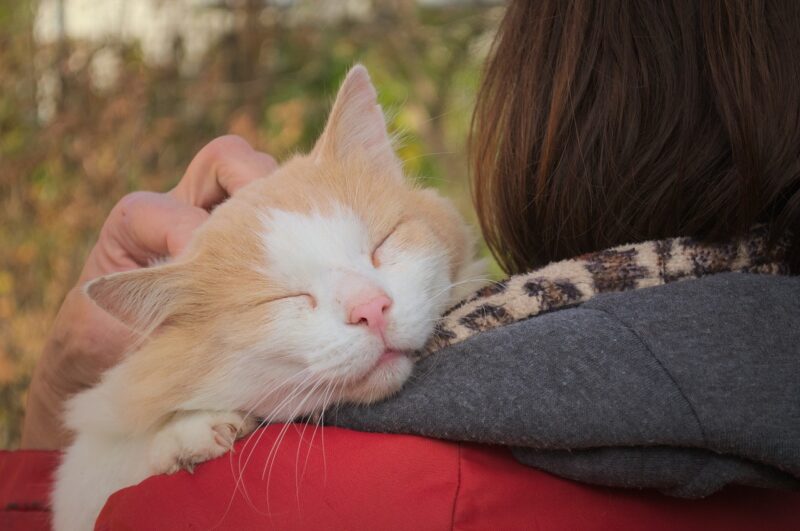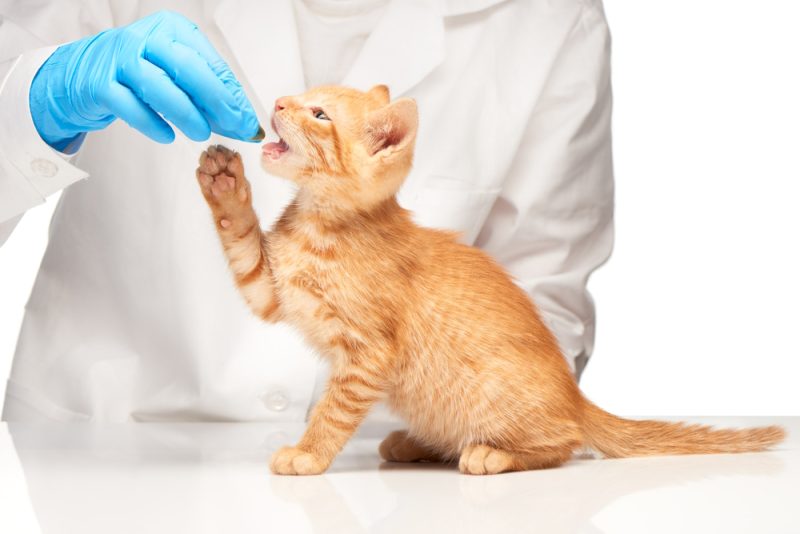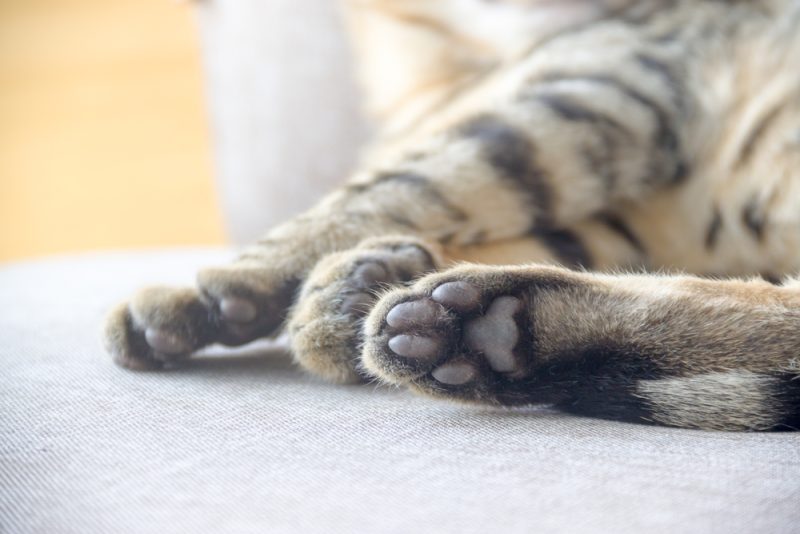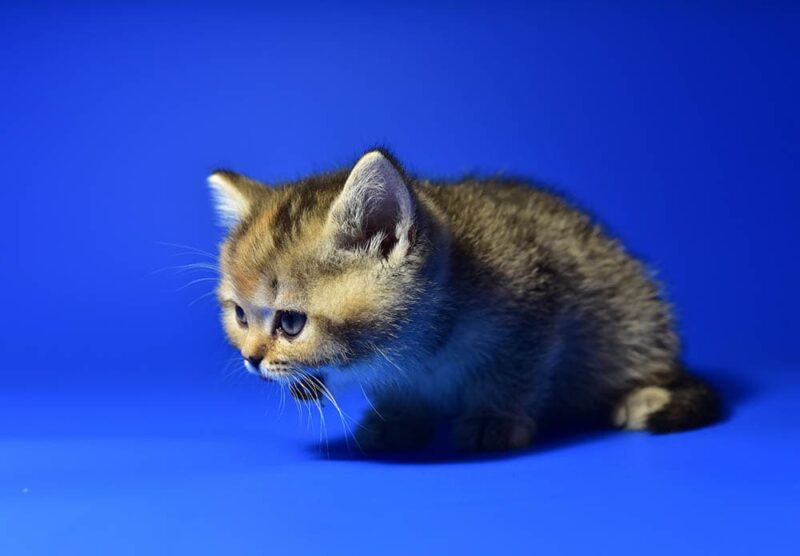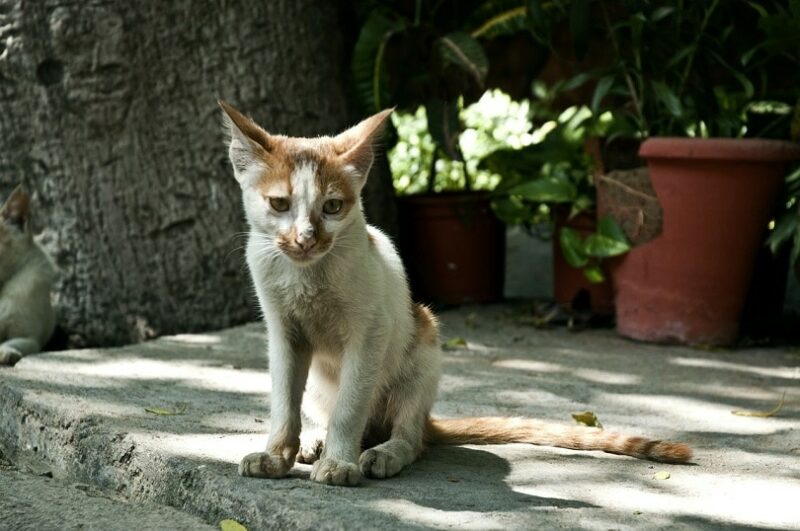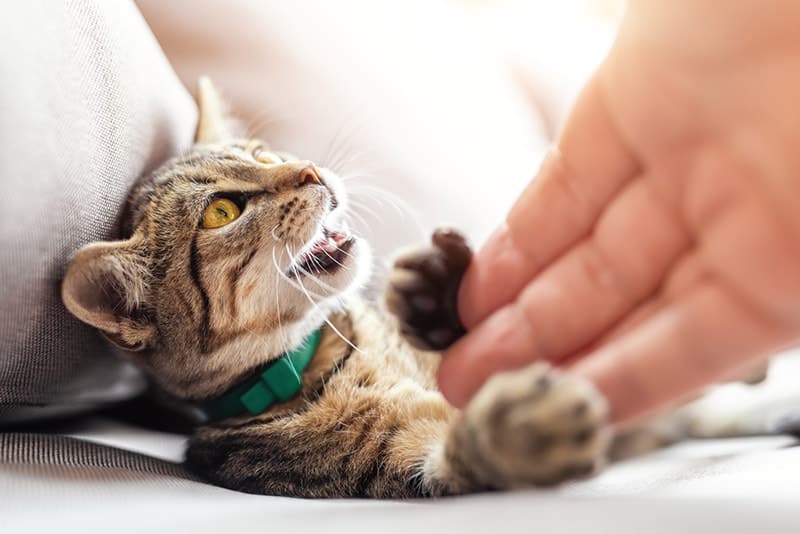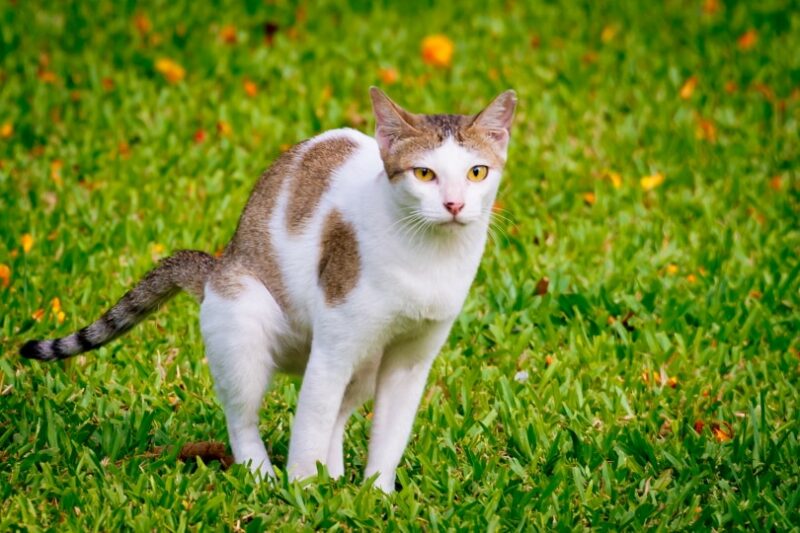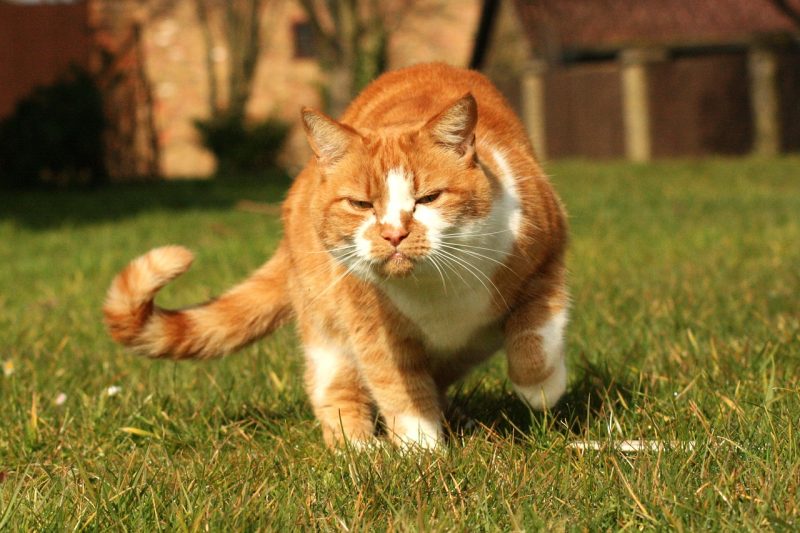In this article
View 8 More +Known for their midnight black coat and glossy golden eyes, the Bombay cat breed is a sleek parlor panther that makes an amazing pet for almost any household. An athletic and affectionate feline, the Bombay was developed by breeding a black American shorthair with a sable Burmese. The result is a shiny, satiny kitty that loves to love.
If you’re considering adding a Bombay cat to your household, here is everything that you need to know about this beautiful breed.
Breed Overview
Height:
6–9 inches
Weight:
7–11 pounds
Lifespan:
12–16 years
Colors:
Black
Suitable for:
Families with pets or young children, active couples
Temperament:
Friendly, affectionate, energetic, intelligent
Bombay Cat Characteristics

Bombay Kittens
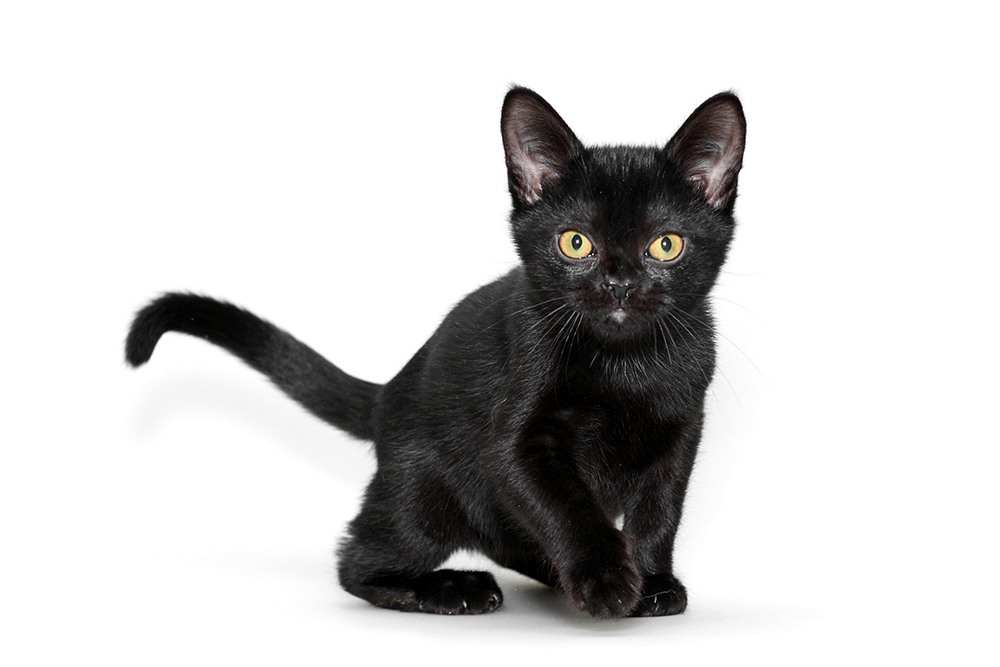
When superstitious people see a black cat, they assume they’re doomed to years of bad luck. When Bombay owners set their eyes on their beautifully black cat, they revel in how fortunate they are to own one!
Recognized by the Cat Fanciers Association in 1970, the Bombay cat is an extremely popular breed. Due to this popularity, Bombay kittens often come with a hefty price tag.
That’s not to say that there aren’t Bombay kittens available at cheaper costs. But buyer beware! Purebred kittens that are sold well below the regular price may come from kitten mills. Much like puppy mills, these large-scale cat breeding operations want to make a quick profit and often completely disregard the welfare of the animals they breed and sell.
- Cats and kittens sharing a small, cramped cage
- No access to clean food and water
- A strong smell of ammonia
- No records of veterinary care or vaccinations
- Kittens always being sold
- Expensive purebreds being sold for suspiciously low prices
- No references from past clients
If you notice any of the aforementioned red flags, take your business elsewhere. Despite the appealingly low cost, kittens from kitten mills have numerous health and psychological issues that can haunt them for years to come.

Temperament & Intelligence of the Bombay Cat
The Bombay cat breed is a social, fun-loving, and extremely smart feline. They love people and other household pets. It’s not a rare sight for a Bombay cat to cuddle up and nap with a dog. However, they like to be the top cat in a multi-cat household and expect all other felines to bow down to them.
You can easily teach your Bombay cat tricks and learn how to walk on a leash. It’s important to keep this inquisitive kitty mentally stimulated to keep boredom away.
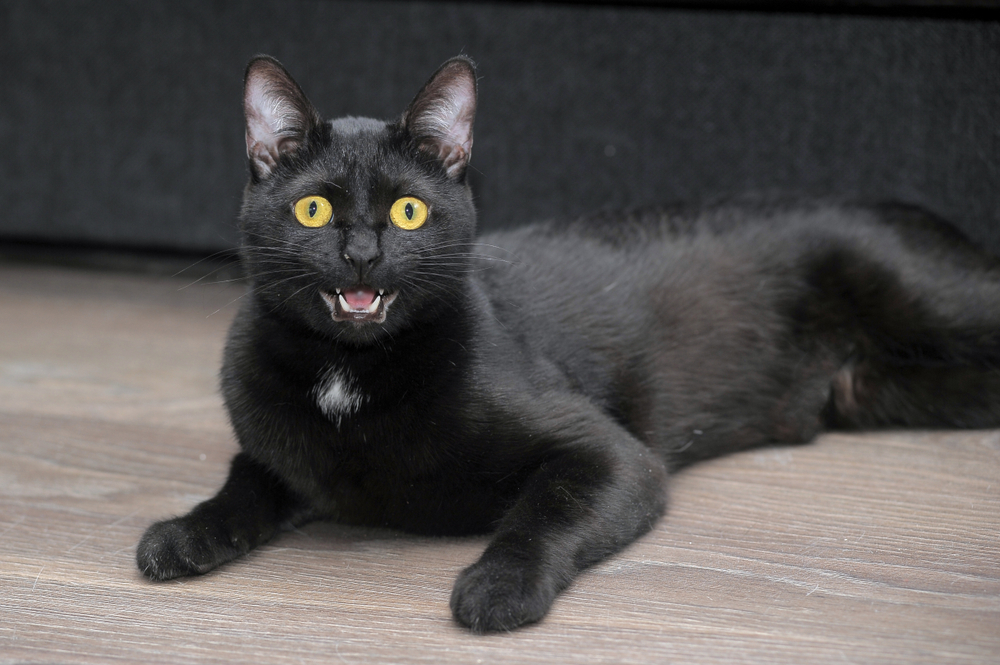
Are These Cats Good for Families? 👪
Yes! The Bombay cat loves people and will get along with everyone in the household, including young children. Plus, thanks to their cuddly side, they really are the perfect cat to join your little family.
Does This Breed Get Along With Other Pets? 🐶🐱
Yes, the Bombay cat breed does get along with other pets. However, they will do their best as the only cat in the house. You might need to keep an eye on themwhen around other cats and pets until they get acquainted with one another.

Things to Know When Owning a Bombay Cat
As you can see, the Bombay is an exceptional breed of cat to own. But like all pets, they do require specific kinds of care. From their diet requirements to their grooming needs, here is everything you need to know about caring for a Bombay.
Food & Diet Requirements 
While the Bombay cats don’t have any special breed-specific diet requirements, they do need a high-quality, high-protein diet. Their main diet should include cat kibble. However, you can add a scoop of wet food to their meals once a day to keep them properly hydrated. Keep in mind that your Bombay’s dietary needs will change as they age. Additionally, always provide your cat with access to fresh, clean water.
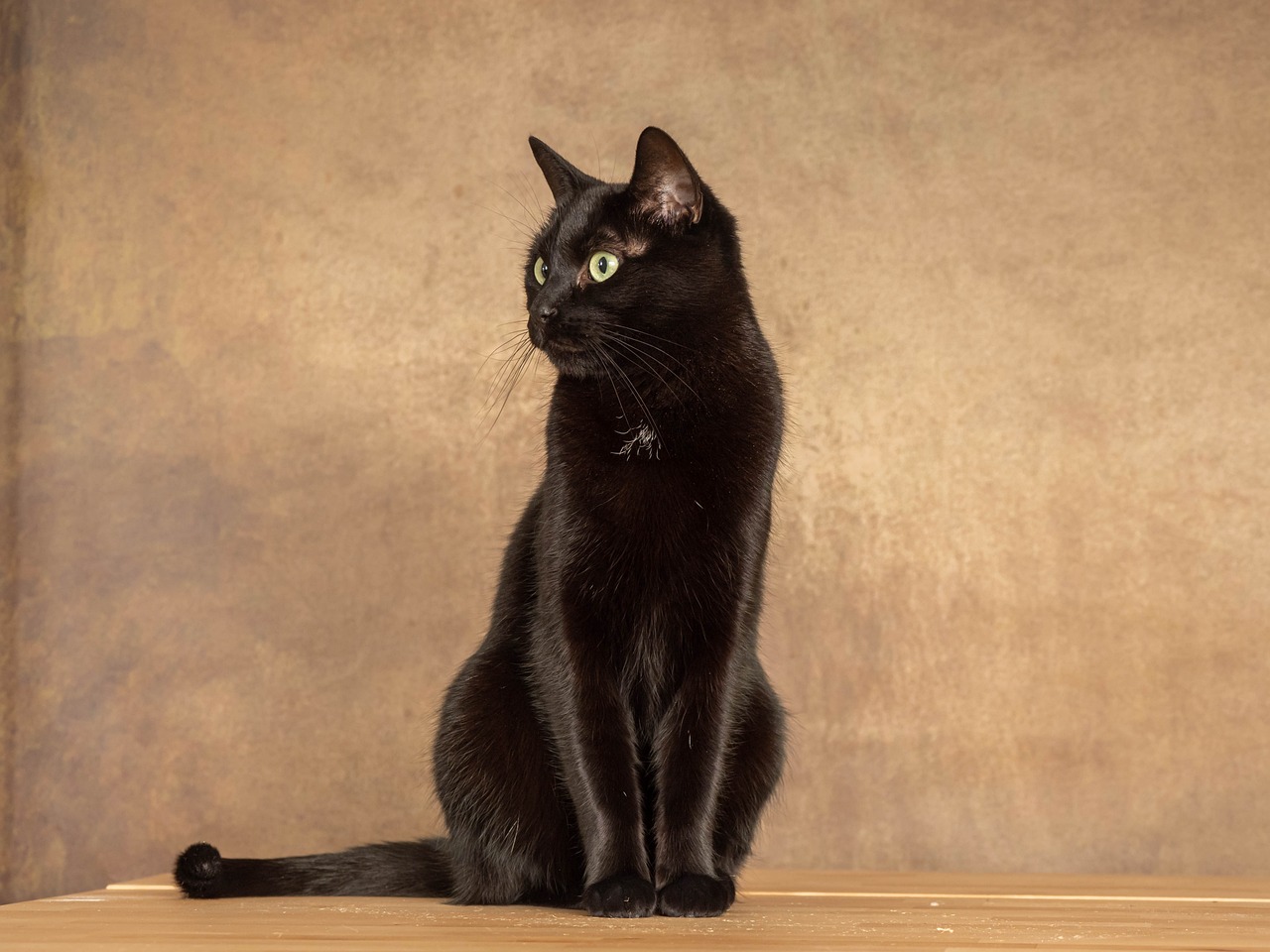
Exercise 🐈
The Bombay purebred cat is an athletic, energetic feline. As such, you should provide them with ample amounts of physical exercise every day. Whether you engage them with interactive cat toys, such as a laser, or take them for walks around the backyard in a cat harness, aim to physically engage your Bombay for at least an hour each day.
In addition to physical exercise, your cat needs to be mentally stimulated too. You can do this by grooming them, teaching them fun new tricks, and providing them with fun, thought-provoking toys.
Training 🧶
As a highly intelligent feline, the Bombay cat can learn basic tricks with ease. Positive reinforcement combined with a lot of patience works best for this breed.
Grooming ✂️
Bombay cats are very low maintenance when it comes to their grooming needs. As self-groomers, your cat will keep themselves clean and shiny. However, be sure to brush them once a week to keep their coat glistening. Trim their nails as needed, and brush their teeth two to three times per week.
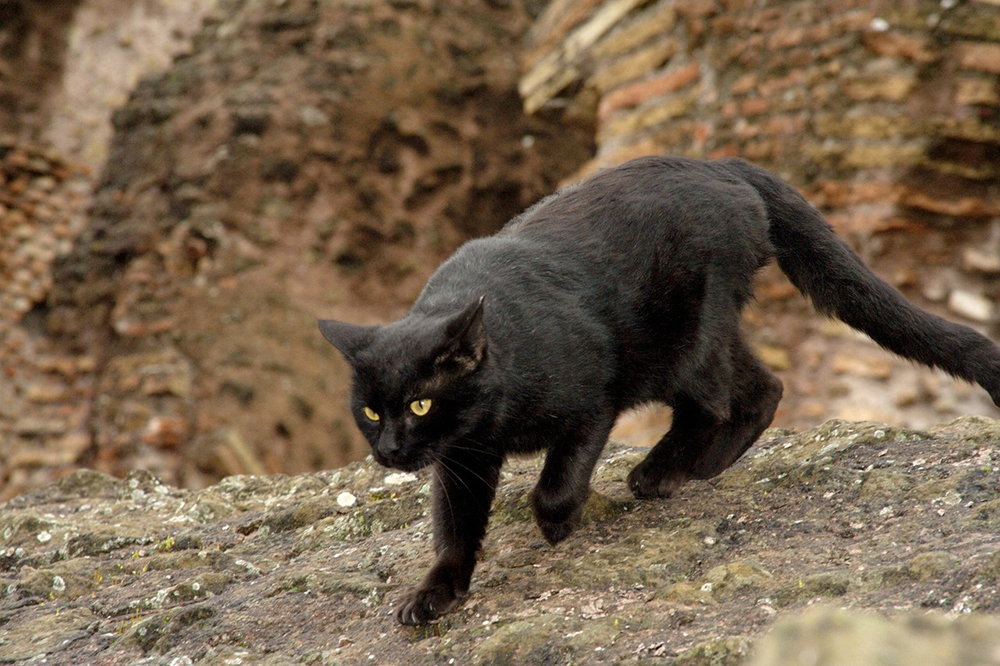
Health and Conditions 🏥
- Runny nose
- Sinus problems
- Craniofacial defect
- Obesity
- Hypertrophic cardiomyopathy
The Bombay is an overall healthy cat. However, as with any other cat breed, they may develop health issues later on in life. Issues that your Bombay can suffer from include excessive tearing from the eyes and breathing troubles because of their short snout.
This is why it is so important to run, not walk, away from any Bombay breeder who does not have any vet or vaccination records for their cats.
Male vs. Female
Male Bombay cats will be a tad larger than female ones. However, the two sexes do not have any huge personality differences, so this shouldn’t be a huge determining factor when choosing your cat.

3 Little-Known Facts About the Bombay Cat
1. They’re Aren’t From Bombay
Despite their exotic name, the Bombay isn’t from India. They gained their namesake from their leopard-like looks.
2. They’re Entirely Black
Your Bombay is an entirely black cat, right down to their nose and the pads of their paws. That might be a surprise due to the name, but it’s true!
3. Bombay Cats Love to Burrow
Don’t be surprised if your Bombay gets underneath the covers with you! These cats are snuggle bugs and love cuddling their humans.

Final Thoughts
If you’re looking for a social, lovable, and smart feline to bring home, the Bombay may be ideal for you. This wild-looking black cat is great with kids and dogs and thrives on social interaction.
It’s important to buy a Bombay from a reputable and responsible cat breeder who can provide vet and vaccine records. Never be tempted by the low prices of a kitten mill.
Bombay cats need daily amounts of exercise, mental engagement, and tons of social interaction. Pet yours, cuddle on the couch with them, and never leave them alone for long periods of time.
If you’re considering adding a Bombay cat to your family, we highly recommend you do so!
See also:
Featured Image Credit: Viktor Sergeevich, Shutterstock
